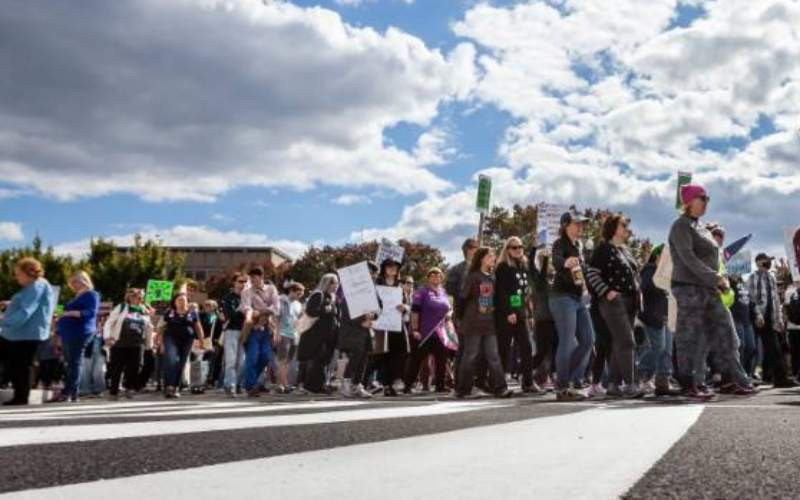By 2050 Africa will have 830 million young people. Many countries in the global south, India included are seeing a youth bulge. To reap a demographic dividend countries in the global south need to share and exchange knowledge to leapfrog socio-economic transformation.
When the Buenos Aires Plan of Action for Technical Cooperation Amongst Developing Countries (BAPA) was adopted, few would have predicted that only 40 years later, developing countries would be accounting for the largest levels of global economic output.
It is an acknowledgement of the fact that new pillars of growth and influence have clearly emerged from the global south that the newly adopted Sustainable Development Goals (SDGs) stress the importance of South-South cooperation in implementing the 2030 agenda.
South-South Cooperation (SSC) is on the rise in scale and scope. It is recognised as crucial in collective efforts to address challenges such as poverty eradication, climate change, food security, social protection, public health and infrastructure development.
SSC is seen by various development actors as a vital complement to North-South Development Cooperation. It may also represent the fertilisation of a debate on how Overseas Development Aid flows relate to broader financing for development flows.
This year, 49 of the 55 member states of the African Union signed the African Continental Free Trade Area (AfCFTA) agreement, which will come into effect once 22 countries ratify it. It will be the largest free trade area that creates an African market of over 1.2 billion people with a GDP of US$2.5 trillion.
At the moment, infrastructure projects account for just over half of South-South cooperation, with China leading in this area. India is a considerable player, with projects such as the Pan African E-Network Project that will connect African countries by a satellite and a fibre-optic network for tele-education, tele–medicine, internet and video-conferencing.
Yet the feeling persists that potential of this cooperation has not been fully leveraged; how do we ensure that trade, investment, technology transfer and knowledge sharing address the needs of recipient countries as prioritised in their development strategies?
These are the kind of questions that will preoccupy organisations such as the United Nations Office for South-South Cooperation (UNOSSC) and United Nations Development Programme (UNDP).
These two are leading efforts to establish the South-South Global Thinkers initiative that will enable joint research and knowledge sharing to inform global policy dialogues on South-South cooperation for the SDGs.
Achim Steiner, UNDP Administrator emphasised UNDP’s role in addressing the knowledge gap that many countries face when confronting their poverty challenges and emphasised that South-South Cooperation has become a “way we conduct business on a daily basis” because it has proven to deliver results on the ground.
If we are to keep our eyes on the overall goal of SDGs – reduction of poverty - it is time to bring support to social sectors on the same level as infrastructure. It is time for investments to target women and youth. Empowerment of these two groups provides the quickest pathway to poverty reduction especially in Africa, with agriculture-based investments the most promising.
Kenya’s economy is anchored on agriculture, where 70 per cent of the population finds its upkeep. In Africa’s agriculture sector, two-thirds of the labour force comprises women. Unfortunately, women farmers have less access to essential inputs — land, credit, fertilisers, new technologies and extension services. As a result, their yields tend to be less than optimum.
The World Bank says that agriculture will be a one trillion dollar business in Africa by 2030. Is there a better way to prepare to reap from part of this business than positioning the continent’s richest resource - the youth?
In his acceptance speech as the global champion of the youth agenda at the UN General Assembly 2018, President Uhuru Kenyatta said, “Progress for the youth means progress for the entire humanity.”
Stay informed. Subscribe to our newsletter
In Kenya for example, one million young people join the work force every year. Of these, only about one in five is likely to find a formal job.
The median age of the Kenyan farmer is 61, yet the median age of the population is 18. This is a potential force that must be involved in agriculture.
To do this, creative and sustainable ways must be found to create opportunities that will present youth with the allure and career progression currently lacking in agriculture.
India and Kenya have already made initial moves in this direction. Following the Indian Prime Minister Narendra Modi’s visit to Kenya two years ago, the two governments agreed to pursue initiatives in sustainable management and extraction of ocean-based resources.
India will be sharing with Kenya expertise on space-based applications to address natural resources management and weather forecasting, expertise that can be exploited to improve food output in the country.
As President Roosevelt said, “We cannot always build a future for our youth, but we can always build our youth for the future.”
Siddharth Chatterjee is the United Nations Resident Coordinator to Kenya.
 The Standard Group Plc is a
multi-media organization with investments in media platforms spanning newspaper
print operations, television, radio broadcasting, digital and online services. The
Standard Group is recognized as a leading multi-media house in Kenya with a key
influence in matters of national and international interest.
The Standard Group Plc is a
multi-media organization with investments in media platforms spanning newspaper
print operations, television, radio broadcasting, digital and online services. The
Standard Group is recognized as a leading multi-media house in Kenya with a key
influence in matters of national and international interest.
 The Standard Group Plc is a
multi-media organization with investments in media platforms spanning newspaper
print operations, television, radio broadcasting, digital and online services. The
Standard Group is recognized as a leading multi-media house in Kenya with a key
influence in matters of national and international interest.
The Standard Group Plc is a
multi-media organization with investments in media platforms spanning newspaper
print operations, television, radio broadcasting, digital and online services. The
Standard Group is recognized as a leading multi-media house in Kenya with a key
influence in matters of national and international interest.








